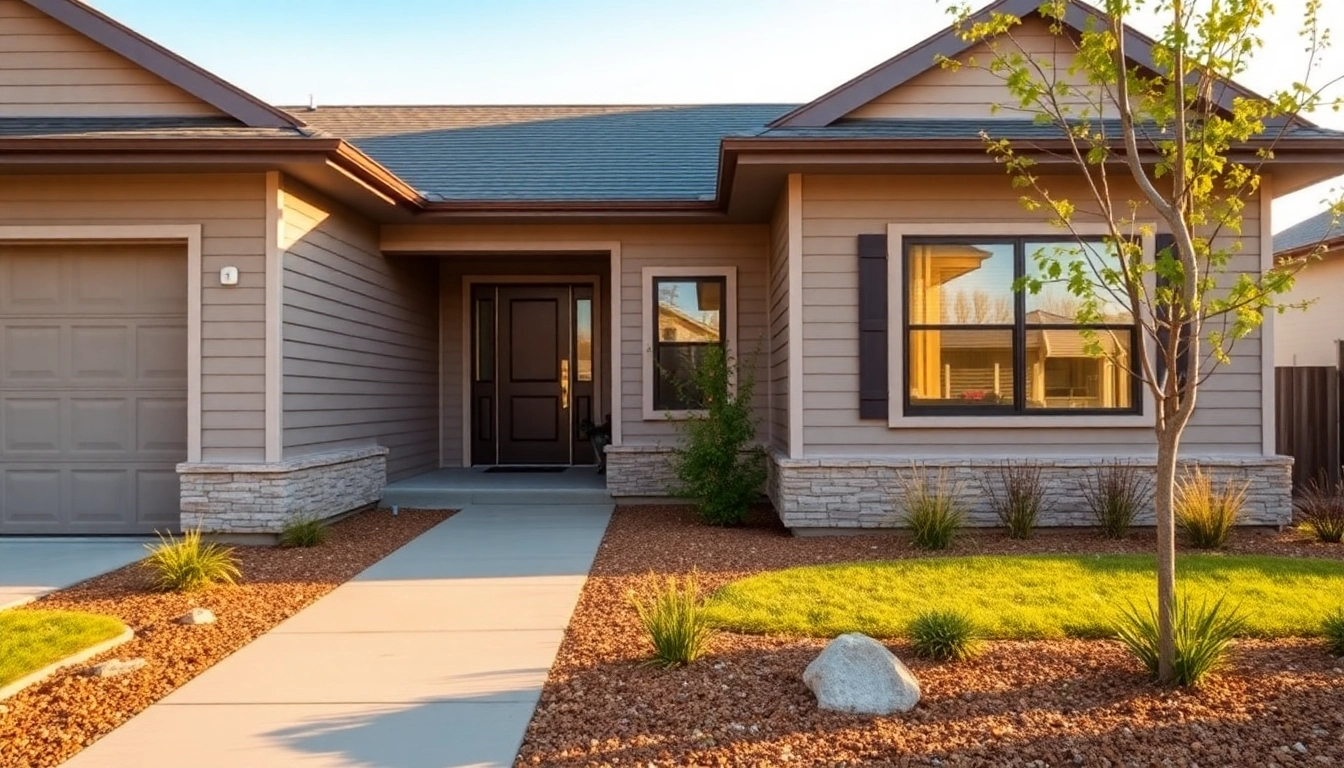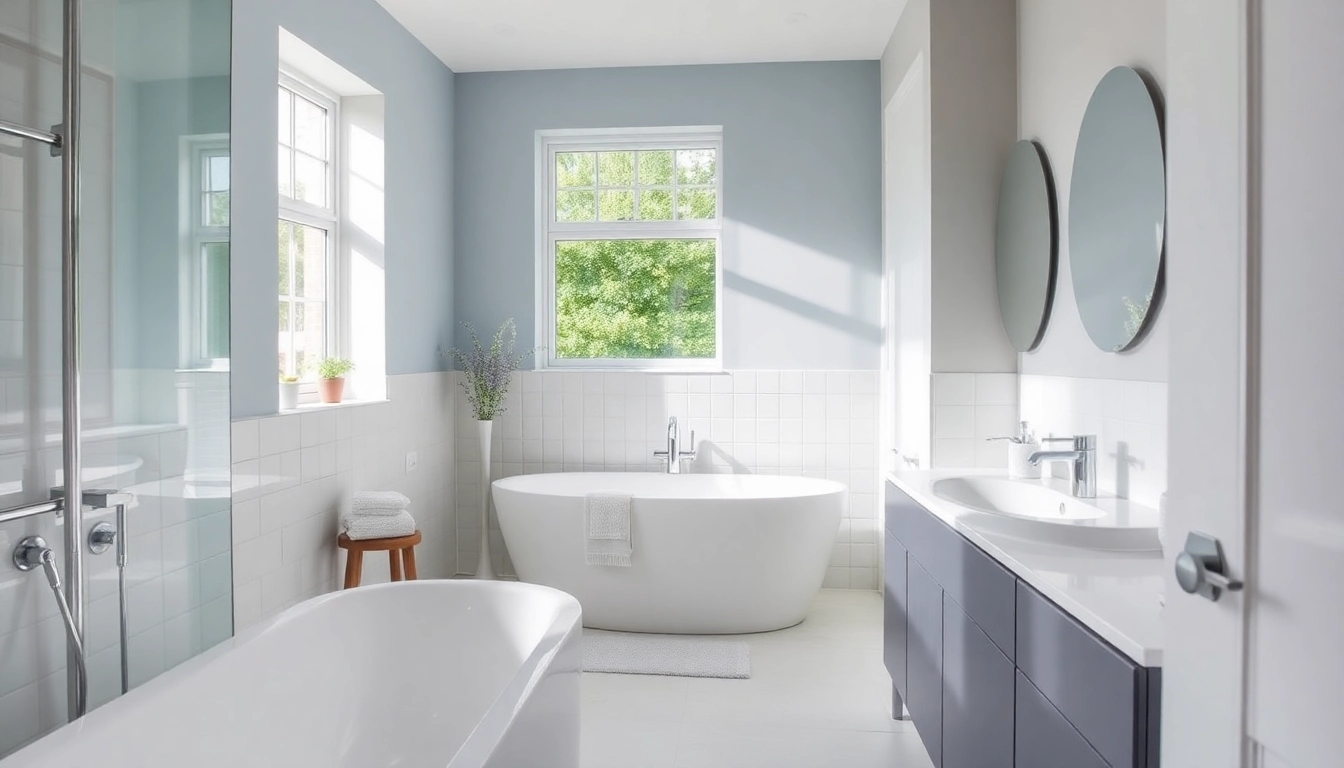Understanding Automatic Bioethanol Fireplaces
What is an Automatic Bioethanol Fireplace?
An automatic bioethanol fireplace is a modern heating solution that combines the elegance of a traditional fire with advanced technology for convenience and efficiency. Unlike conventional fireplaces, which typically rely on wood or gas, automatic bioethanol fireplaces burn bioethanol fuel, a renewable energy source derived from the fermentation of organic materials. These innovative units provide a clean, smoke-free flame that can be controlled electronically, enabling homeowners to enjoy the ambiance of a real fire without the hassle of cleanup or installation associated with traditional fireplaces.
How They Function: The Technology Behind It
Automatic bioethanol fireplaces are designed with user-friendly technology, allowing operation through remote controls or smart home systems. At the core of their functionality is a computerized system that regulates fuel feed, ignition, and flame height. Bioethanol fuel is stored within a chamber, and when activated, the fireplace ignites the fuel automatically. This controlled combustion process ensures the optimal burning of bioethanol, generating warmth and ambiance efficiently. Many models come equipped with safety sensors that detect heat and automatically extinguish the flame if necessary, significantly enhancing safety for household use. These systems are compatible with smart home technology, allowing integration with Alexa or Google Home for added convenience.
Advantages of Choosing Automatic Options
The primary advantage of an automatic bioethanol fireplace is its ease of use. You can ignite and extinguish the fire at the touch of a button, making it incredibly user-friendly. Additionally, these fireplaces do not produce ash, soot, or smoke, facilitating a cleaner home environment. The aesthetic appeal cannot be overstated either—many designs are sleek and modern, complementing various decor styles. Furthermore, as they require no chimney or flue, installation is simplified, allowing for versatile decor placement inside the home, even in urban settings where traditional fireplaces might be prohibited. For those interested, the automatic bioethanol fireplace offers a sophisticated way to elevate any living space with its modern, clean design and efficient heating capabilities.
Key Features to Consider When Buying
Safety Mechanisms: Ensuring Peace of Mind
Safety should always be a priority when selecting any heating appliance, and automatic bioethanol fireplaces are no exception. Look for models that are equipped with multiple safety features. Common safety mechanisms include:
- Automatic Shut-Off: Sensors that detect anomalies such as temperature fluctuations or if the flame goes out unexpectedly, triggering automatic shutdown.
- Flame Height Adjustment: The ability to control the flame’s size for different ambiance levels, which also enhances safety by preventing overly large flames.
- Child Lock Feature: To prevent accidental ignition, this feature ensures that only adults can operate the fireplace.
- Ventless Systems: Many models are designed to operate without ventilation, which minimizes combustion-related issues while ensuring proper safety standards.
By prioritizing these safety features, homeowners can enjoy the warmth and aesthetic of an automatic bioethanol fireplace with peace of mind.
Design Options: Finding Your Perfect Match
The market for automatic bioethanol fireplaces has expanded significantly, offering a wide variety of designs to suit different tastes and home styles. Here are some of the most popular design options:
- Wall-Mounted Fireplaces: These fireplaces are ideal for small spaces, offering a stylish focal point without occupying floor space. They are perfect for modern, minimalistic interiors.
- Freestanding Models: These fireplaces can be placed anywhere in the home, offering flexibility in design. They come in various shapes and sizes, including traditional fireplace forms to contemporary, artistic designs.
- Tabletop Fireplaces: Compact and portable, these models can be placed on countertops or tables, adding a cozy ambiance to dining or leisure areas.
- Custom-Built Units: For those wanting a truly unique fireplace, custom designs can be created to fit specific space requirements and aesthetic preferences.
Consider the overall style of your home and the specific location where the fireplace will be installed to select a design that seamlessly integrates into your space.
Size Matters: Choosing the Right Fit for Your Space
When selecting an automatic bioethanol fireplace, size is a critical factor. A large fireplace in a small room can overwhelm the space, while a small unit may not effectively heat larger areas. Here are some tips for choosing the right size:
- Measure Your Space: Determine where you want to place the fireplace and measure the available space to ensure a proper fit.
- Heating Needs: Consider the room size. A general guideline is that a fireplace should provide around 4,000 BTUs of heat per hour for 400 square feet.
- Visual Proportion: Choose a size that is visually proportional to the furniture and other décor in the room. A balanced look enhances the overall aesthetic.
Installation and Maintenance Tips
Step-by-Step Installation Guide
Installing an automatic bioethanol fireplace typically involves the following steps:
- Prepare the Space: Ensure you have a clear area where the fireplace will be located. If it is a mounted or built-in model, ensure the necessary installation tools and materials are on hand.
- Follow Manufacturer Instructions: Every fireplace comes with specific guidelines for installation. Follow these instructions closely to avoid damage or safety hazards.
- Secure the Unit: For wall-mounted models, ensure the brackets are properly secured to support the weight of the fireplace. Use the appropriate anchors and screws.
- Connect Fuel Supply: Ensure that the bioethanol fuel canister is securely in place as indicated in the user manual, without leaks or spills.
- Conduct a Safety Check: Before first use, check all connections, sensors, and safety mechanisms. Ensure they’re operational before igniting the fireplace.
Routine Maintenance for Longevity
Regular maintenance is essential to ensure your automatic bioethanol fireplace operates efficiently and safely. Here are some maintenance tips:
- Clean the Glass: Regularly clean the glass panel with a suitable cleaner to keep it clear and free of soot and residue.
- Inspect Sensors and Mechanisms: Periodically test safety sensors and other electronic components to ensure they function correctly.
- Check Fuel Supply: Regularly check the bioethanol fuel supply level and store extra fuel in a safe, designated area.
- Professional Servicing: Schedule professional maintenance at least once a year to ensure comprehensive checks and repairs, if needed.
Common Issues and Troubleshooting
Even the best appliances can encounter issues. Here are common problems with automatic bioethanol fireplaces and tips for troubleshooting:
- Flame Won’t Stay Lit: Check the fuel level and ensure there are no blockages in the fuel delivery system. If the problem persists, inspect the ignition system.
- Weak Flame: This can occur if the fuel is too low-quality or stale. Ensure fresh, high-quality bioethanol is used.
- Sensor Errors: If the fireplace shows an error message, refer to the user manual for troubleshooting steps. It may be necessary to reset the system or check for sensor obstructions.
Comparing Bioethanol Fireplaces to Other Heating Solutions
Bioethanol vs. Electric Fireplaces
When choosing between bioethanol fireplaces and electric alternatives, consider the following comparison:
| Feature | Bioethanol Fireplaces | Electric Fireplaces |
|---|---|---|
| Ambiance | Real flames provide a natural aesthetic | Simulated flames lack the authenticity |
| Installation | No venting required, easy installation | May need electrical work for installation |
| Efficiency | Burns renewable fuel for heat | Utilizes electricity, often requiring a significant power source |
| Safety | Requires careful fuel handling | Generally safer with no open flames |
Efficiency Compared: Heat Output and Cost
Bioethanol fireplaces tend to have lower heat outputs compared to gas or electric systems. They generally produce about 2,000-6,000 BTUs, which is suitable for supplemental heating but may not suffice for primary heating. In cost terms, while bioethanol fuel can be more expensive per hour than electricity, the ambiance and flexibility they provide in installation can justify the price for many users.
Using Bioethanol in Off-Grid Locations
The ability to utilize bioethanol fireplaces in off-grid settings presents a unique advantage, especially for vacation homes or cabins. Since they don’t require electricity or ventilation, these fireplaces can be employed virtually anywhere. This capability allows homeowners to create a cozy atmosphere regardless of their home’s location, making it an attractive option for those living in remote areas.
Making the Most of Your Bioethanol Fireplace
Creating the Ideal Ambiance with Accessories
To enhance the beauty and efficiency of your automatic bioethanol fireplace, consider various accessories:
- Fireplace Screens: These decorative screens not only enhance safety but also add an artful design element.
- Decorative Logs and Stones: Adding real or faux logs and stones creates a more natural setting, enriching the visual appeal of the flame.
- Remote Controls & Apps: Many modern bioethanol fireplaces come with advanced remote controls or apps, allowing for easy management of flame settings and operation from anywhere in the room.
- Surrounds and Mantels: Custom-designed surrounds can add a sophisticated touch, allowing your fireplace to be not just a heat source but also a centerpiece.
Maximizing Efficiency with Fuel Choices
Choosing the right bioethanol fuel is critical for maximizing the efficiency and performance of your fireplace. Always opt for high-quality, specially designed bioethanol fuels that minimize emissions and ensure an even burn. Also, consider the packaging format; larger containers may be more cost-effective and reduce the frequency of refueling, further enhancing convenience.
Customer Experiences and Testimonials
Potential buyers can benefit significantly from real user experiences when evaluating automatic bioethanol fireplaces. Customers often praise the ambiance created by these fireplaces, noting how they become a focal point in living spaces. Feedback on safety features is overwhelmingly positive, with users appreciating the peace of mind provided by automatic shut-off mechanisms. However, some users report challenges in fuel availability and cost, stressing the importance of selecting a service that supplies easily accessible, high-quality bioethanol fuel.



